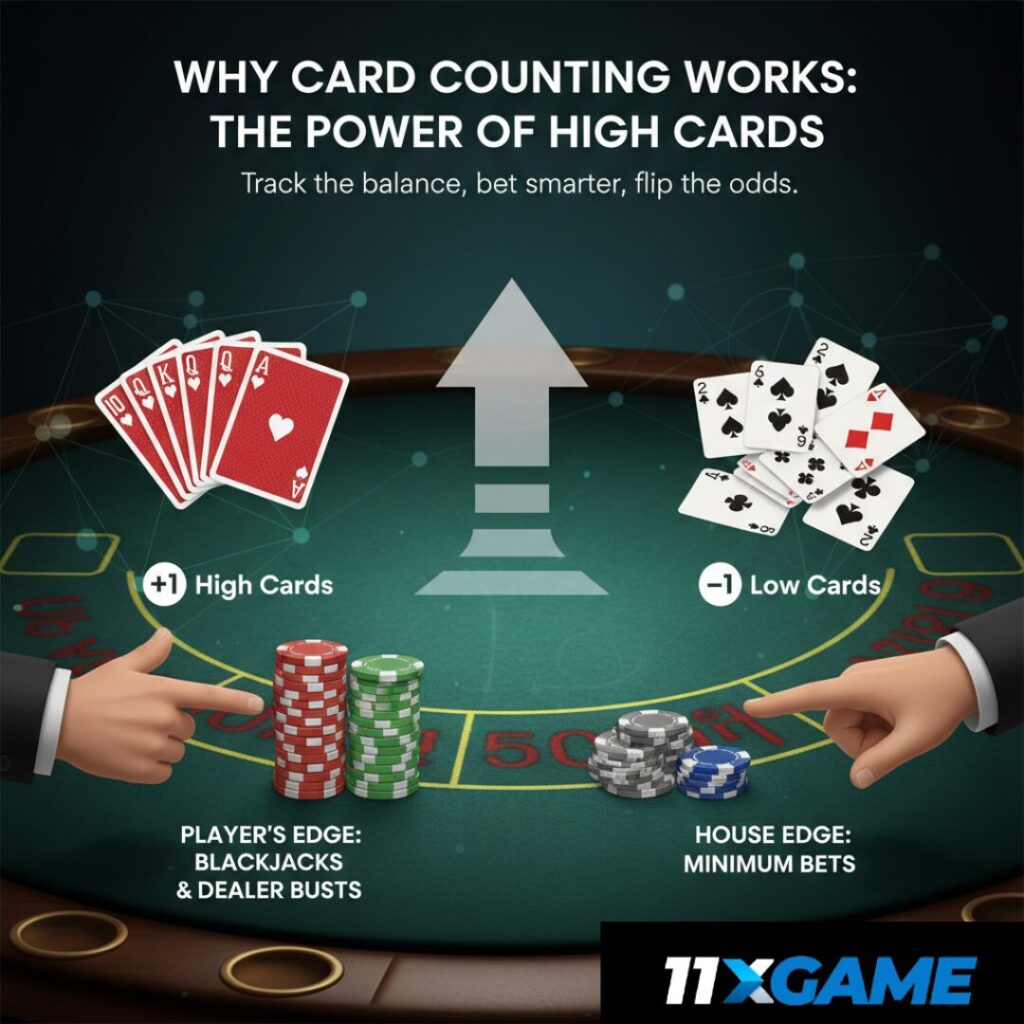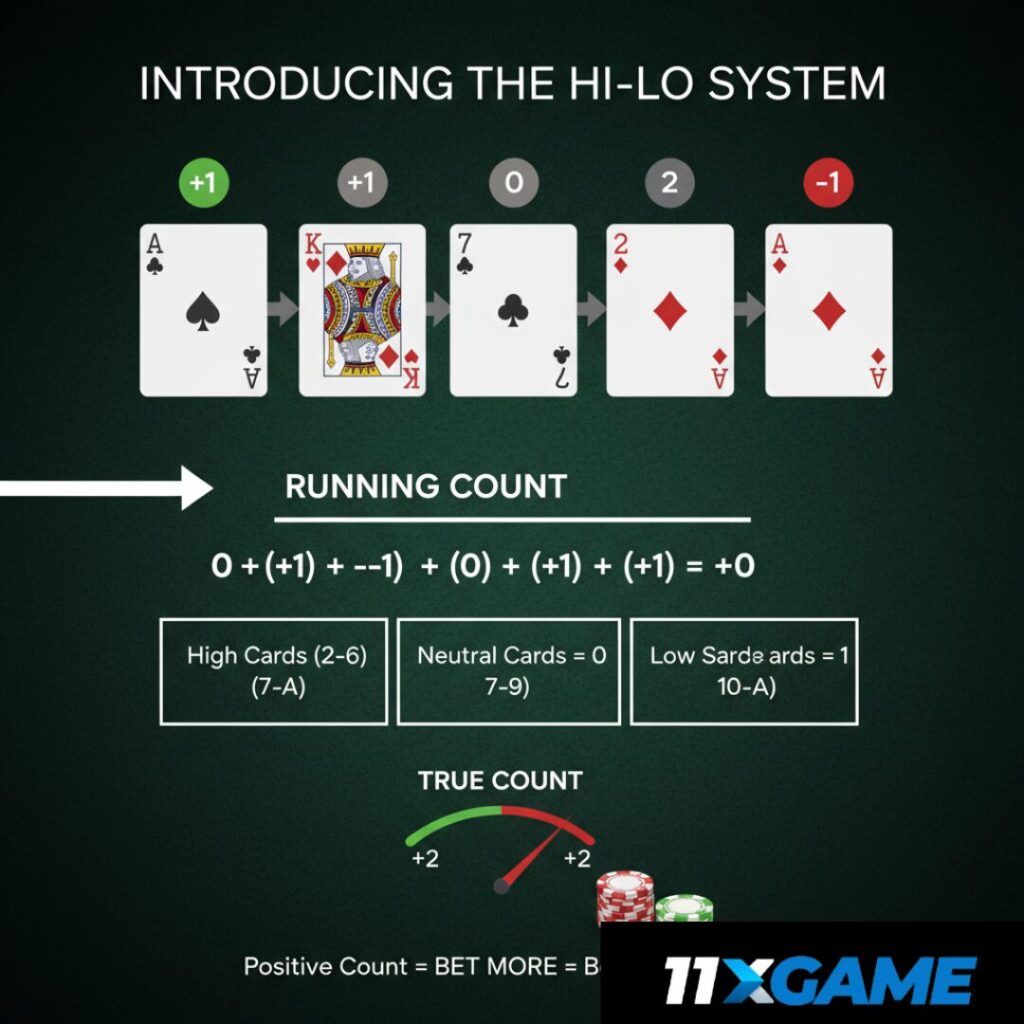10 Essential Tips on Card Counting for Beginner Blackjack Players
Card counting for beginner enthusiasts might seem like something out of a high-stakes movie, but it’s actually a practical skill that can level up your blackjack game. If you’re just starting out, don’t worry—it’s not about being a math genius or memorizing every card. Instead, it’s a straightforward way to track what’s happening in the deck and make smarter decisions. This guide breaks it down step by step, helping you understand the basics without overwhelming you. Whether you’re playing for fun or hoping to tip the odds a bit in your favor, getting a handle on card counting for beginner levels can make your casino visits more enjoyable and strategic.
Let’s dive right in. We’ll cover everything from the fundamentals to real-world applications, with plenty of examples to keep things relatable. By the end, you’ll have a solid foundation to practice on your own.

Understanding the Basics of Blackjack Before Card Counting
Before jumping into card counting for beginner strategies, it’s crucial to grasp how blackjack works. The game pits you against the dealer, with the goal of getting a hand closer to 21 than theirs without going over. You start with two cards, and the dealer has one face up and one hidden.
Blackjack uses standard decks, often multiple ones shuffled together in a shoe. Cards have point values: numbers 2-10 are face value, face cards (J, Q, K) are 10, and aces can be 1 or 11. Basic moves include hitting (taking another card), standing (keeping your hand), doubling down (doubling your bet for one more card), or splitting pairs.
Why does this matter for card counting for beginner players? Because counting builds on knowing when the deck favors you. For instance, more high cards left mean better chances for blackjacks, which pay 3:2. Low cards, though, help the dealer avoid busting.
Think of it like this: in a casual home game with friends, you might not notice patterns. But in a casino, spotting them changes everything. Start by playing simple rounds online—sites like 11xgame.live offer practice modes where you can get comfortable without real stakes.
Why Card Counting for Beginner Players Works
Card counting for beginner approaches isn’t magic; it’s math. The house edge in blackjack is low, around 0.5% with perfect play. Counting can flip that to a 1-2% player advantage in ideal conditions. It tracks high and low cards to predict what’s coming.
High cards (10s, faces, aces) benefit players because they lead to blackjacks and force dealers to bust more often. Low cards (2-6) do the opposite. When more highs remain, you bet bigger. Simple, right?
For beginners, this means focusing on patterns rather than every detail. Imagine sitting at a table: if you’ve seen lots of low cards early, the deck is “hot” with highs. That’s your cue to ramp up bets.
But remember, casinos shuffle often, so opportunities come in waves. It’s not foolproof—variance means you can still lose short-term. Yet, over hundreds of hands, it adds up.

A Brief History of Card Counting Techniques
Card counting didn’t start in flashy Vegas lounges. It traces back to the 1950s when mathematicians like Edward Thorp experimented with probabilities. Thorp’s 1962 book “Beat the Dealer” popularized it, showing how tracking cards could beat the house.
Early methods were complex, but they evolved. The Hi-Lo system, which we’ll cover, simplified things for everyday players. By the 1970s, teams like the MIT Blackjack Team made headlines, winning millions through coordinated counting.
For card counting for beginner learners today, history shows it’s accessible. No need for a PhD—just patience. Modern casinos counter with more decks and shufflers, but the core idea endures. It’s a testament to smart play over luck.
Check out more historical insights on betting strategies at 11xgame.org for blogs on various games.
Mastering Basic Strategy: The Foundation for Card Counting
Card counting for beginner success starts with basic strategy, not counting itself. This is a chart of optimal moves based on your hand and the dealer’s upcard. Memorize it to reduce the house edge first.
For example, always split aces and 8s, but never 10s. Hit on 12-16 if the dealer shows 7 or higher. Double on 11 against most dealer cards.
Why prioritize this? Counting adjusts bets, but poor plays waste edges. Practice with apps or free tables. Once automatic, add counting.
Here’s a quick table of basic strategy highlights:
| Your Hand | Dealer Upcard 2-6 | Dealer Upcard 7-A |
| 8 or less | Hit | Hit |
| 9 | Double if 3-6 | Hit |
| 10 | Double | Double if not A |
| 11 | Double | Double |
| 12 | Hit if 2-3, Stand if 4-6 | Hit |
| Soft 17 | Double if 2-6 | Hit |
Use this as a cheat sheet initially. It makes card counting for beginner integration smoother.
Introducing the Hi-Lo System for Card Counting for Beginner
The Hi-Lo is perfect for card counting for beginner users because it’s balanced and easy. Assign values: +1 for 2-6, 0 for 7-9, -1 for 10-A.
Start at 0. Add/subtract as cards appear. A positive count means more highs left—bet more. Negative? Bet minimum.
Example: Deck starts, cards dealt: 4 (+1), K (-1), 7 (0), 2 (+1), A (-1). Running count: +1 -1 =0, +0=0, +1=1, -1=0.
In multi-deck games, calculate true count: running count divided by decks left. True +2 or higher? Increase bets.

Practice slowly. It’s like keeping score in a game—gets natural fast.
How to Practice Card Counting for Beginner Effectively 🎴
Practice is key for card counting for beginner mastery. Start alone: flip through a deck, calling values and keeping count. Aim for accuracy under 30 seconds per deck.
Then, simulate games. Deal hands to imaginary players, update count. Use distractions—play music or chat—to mimic casinos.
Apps help too. Many free ones drill counting. Or play low-stakes online at places like 11xgame.vip to test in real time.
Track progress: Note errors, speed. Goal: Count flawlessly while deciding plays.
Real scenario: My friend Joe, new to this, practiced daily for a week. His first casino trip? He spotted a +3 count and doubled his bet, winning big on a blackjack. Small wins build confidence.
Common Mistakes in Card Counting for Beginner and How to Avoid Them
Newbies often mess up by counting wrong—missing cards or resetting too soon. Fix: Focus on every card, even burns.
Another pitfall: Betting wildly on small positives. Wait for +2 true count minimum.
Discretion matters. Don’t stare or mumble counts—casinos watch. Act casual.
Overconfidence leads to ignoring basic strategy. Always combine.
Quick tip: Use mental anchors, like associating +1 with “low boost.” Avoids mix-ups.
Community insights: Forums say beginners undervalue practice. One user shared losing $200 from rushed counting. Learn from others.
Real-Life Scenarios in Card Counting for Beginner Applications
Picture this: You’re at a six-deck table. Early hands show many lows—count hits +4. You bet big, get 10-ace for blackjack. Dealer busts on 16 hitting a 10. Win!
Another: Count drops to -3 mid-shoe. You bet minimum, avoid losses as highs vanish, dealer gets strong hands.
In a single-deck game (rare but fun), counts swing fast. Spot +2 early? Play aggressively.
These aren’t hypotheticals—friends have shared similar tales. One vacation in Vegas, a beginner countered a cold streak by sitting out, saving bankroll.
For more scenarios, explore 11xgame.club games.

Advanced Variations Beyond Basic Card Counting for Beginner
Once comfy, try tweaks. Side counts for aces track insurance bets.
Or Zen count: Different values for nuance.
But for card counting for beginner, stick to Hi-Lo. Build from there.
Table of variations:
| System | Complexity | Edge Gain |
| Hi-Lo | Low | 1% |
| KO | Medium | 1.1% |
| Omega II | High | 1.5% |
Choose based on comfort.
Community Insights on Card Counting for Beginner Journeys
Online groups buzz with stories. Reddit users swear by home drills before casinos. One thread: “Started with Hi-Lo, won $500 first night!”
Forums highlight teamwork—spotters signal big bettors.
Challenges? Detection fears. Pros advise varying bets subtly.
Insights: Patience pays. Beginners succeed by starting small.
Quick Tips for Success in Card Counting for Beginner
- Start slow: Count one table at a time. 🚀
- Bankroll management: Risk 1-2% per hand.
- Stay sober: Alcohol blurs focus.
- Learn rules variations: Some favor counters.
- Track sessions: Journal wins/losses for patterns.
These bites keep you sharp.
Highlights from Expert Advice
Experts emphasize ethics—counting’s legal, but respect house rules.
Thorp’s legacy: Math beats myth.
Modern tip: Avoid continuous shufflers; they reset counts.

FAQs on Card Counting for Beginner
Q1: Is card counting illegal?
No, it’s a skill, but casinos can ban you.
Q2: How long to learn Hi-Lo?
Most get basics in a week with daily practice.
Q3: Single vs. multi-deck?
Single’s easier for beginners, but rarer.
Q4: What if I lose count?
Reset to 0 and continue conservatively.
Q5: Can I count online?
Yes, but live dealer games mimic real.
Q6: Best bankroll size?
At least 100 times minimum bet.
Q7: Does it work every time?
No, variance exists—play long-term.
Q8: Tools for practice?
Decks, apps, or online simulators.
Q9: Spot detection signs?
If pit boss watches, vary play.
Q10: Next steps after beginner?
Learn true count adjustments.
Ready to put these tips into action? Head over to 11xgame.live and try a few hands to build your skills today.






